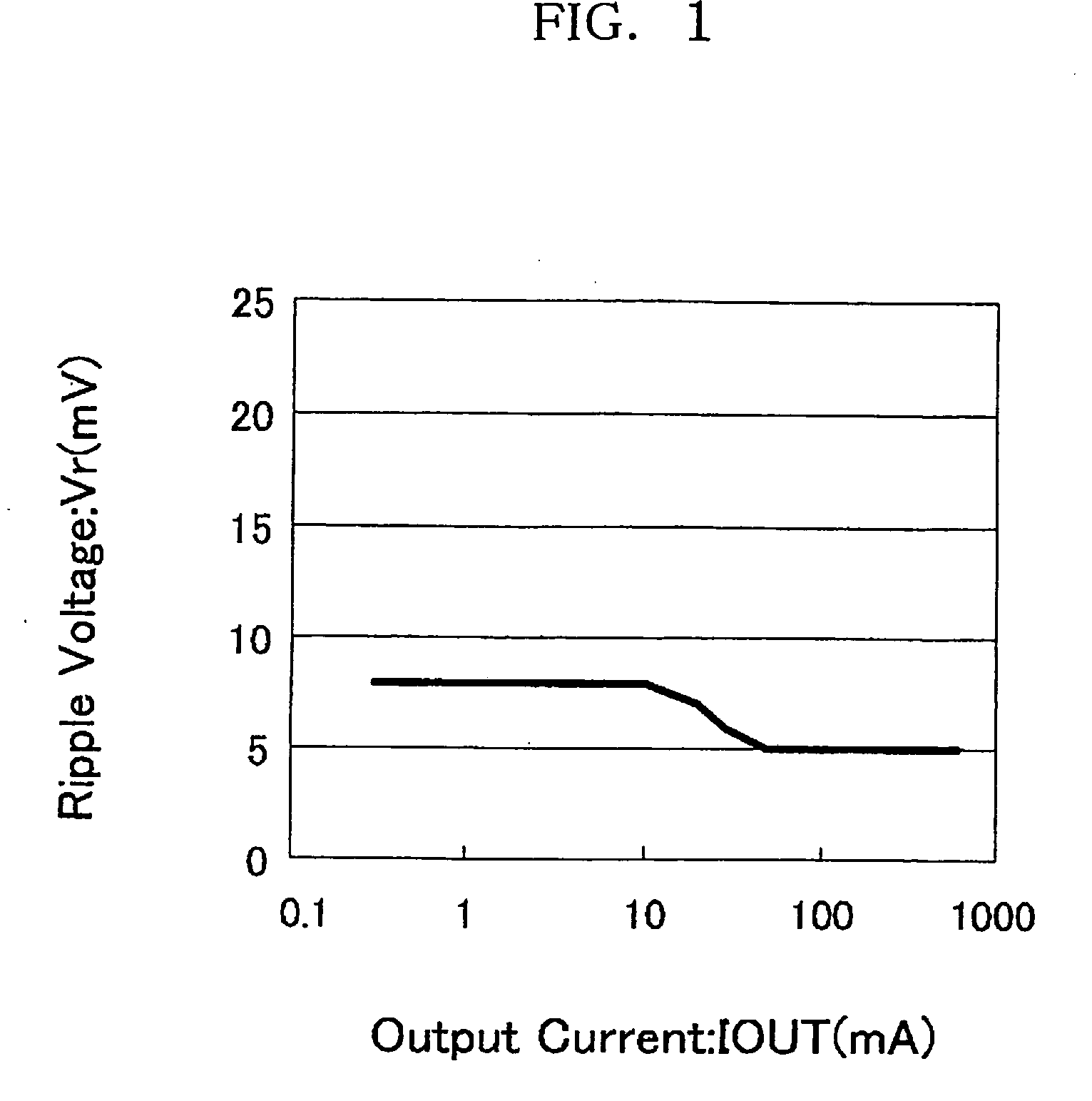PWM/PFM Control Circuit and Switching Power Supply Circuit
a control circuit and power supply circuit technology, applied in the direction of power conversion systems, dc-dc conversion, instruments, etc., can solve the problems of ripple voltage increase, output voltage ripple voltage, etc., and achieve the effects of small power consumption, great ripple component, and great power consumption
- Summary
- Abstract
- Description
- Claims
- Application Information
AI Technical Summary
Benefits of technology
Problems solved by technology
Method used
Image
Examples
first embodiment
[0047]FIG. 2 is a circuit diagram showing a switching power supply circuit according to a first embodiment of the present invention. This embodiment is a combination of the chopper circuit shown in FIG. 10 and a novel PWM / PFM control circuit. That is, the present embodiment is a switching power supply circuit which has the chopper circuit according to the earlier technology as an object to be controlled.
[0048]However, the object to be controlled need not be limited to such a chopper circuit. No limitations are imposed, as long as the object to be controlled is such that if the load on this object is a heavy load of a predetermined value or higher, the object is operated under PWM control by which the pulse width is determined by this load, and if the load is a light load of less than the predetermined value, the object is operated under PFM control by which the frequency is determined by this load (the same applies in each of the subsequent embodiments).
[0049]As shown in FIG. 2, the...
second embodiment
[0061]FIG. 5 is a circuit diagram showing a PWM / PFM control circuit in a switching power supply circuit according to a second embodiment of the present invention. In the present embodiment, as shown in this drawing, a differential time signal S7 is directly supplied to a triangular wave generator 5, and the oscillation frequency of a ramp signal S2, which is the output signal of the triangular wave generator 5, is controlled based on the differential time signal S7. Other features are exactly the same as those of the PWM / PFM control circuit of the switching power supply circuit shown in FIG. 2. Thus, the same portions as those in FIG. 2 are assigned the same numerals and symbols as in FIG. 2, and duplicate explanations are omitted.
[0062]FIGS. 6A to 6E are timing charts showing the waveforms of respective portions of the PWM / PFM control circuit according to the present embodiment. FIG. 6A represents the relationship between an error signal S1 and the ramp signal S2 as a reference sig...
first example
[0071]FIG. 8 is a circuit diagram showing a first example which is a concrete example of the oscillator 4 in the PWM / PFM control circuits shown in FIGS. 2 and 7. As shown in this drawing, an oscillator 4 according to the present example is formed from a ring oscillator having an oscillation frequency defined by the charging times of capacitors C1 and C2. A charging current for charging the input-side capacitor C1 of the ring oscillator is blocked by a differential time signal S7 to delay the timing of oscillation, thereby controlling the oscillation frequency of the reference signal S6 to a low value.
[0072]In the present example, a charging current for the input-side capacitor C1 becomes a triangular wave comprising pulses repeating on a predetermined cycle (oscillation cycle) if the differential time signal S7 is absent. When the differential time signal S7 occurs, a voltage CON is blocked for a time corresponding to the differential time a, b or c. Thus, the relevant portions take...
PUM
 Login to View More
Login to View More Abstract
Description
Claims
Application Information
 Login to View More
Login to View More - R&D
- Intellectual Property
- Life Sciences
- Materials
- Tech Scout
- Unparalleled Data Quality
- Higher Quality Content
- 60% Fewer Hallucinations
Browse by: Latest US Patents, China's latest patents, Technical Efficacy Thesaurus, Application Domain, Technology Topic, Popular Technical Reports.
© 2025 PatSnap. All rights reserved.Legal|Privacy policy|Modern Slavery Act Transparency Statement|Sitemap|About US| Contact US: help@patsnap.com



